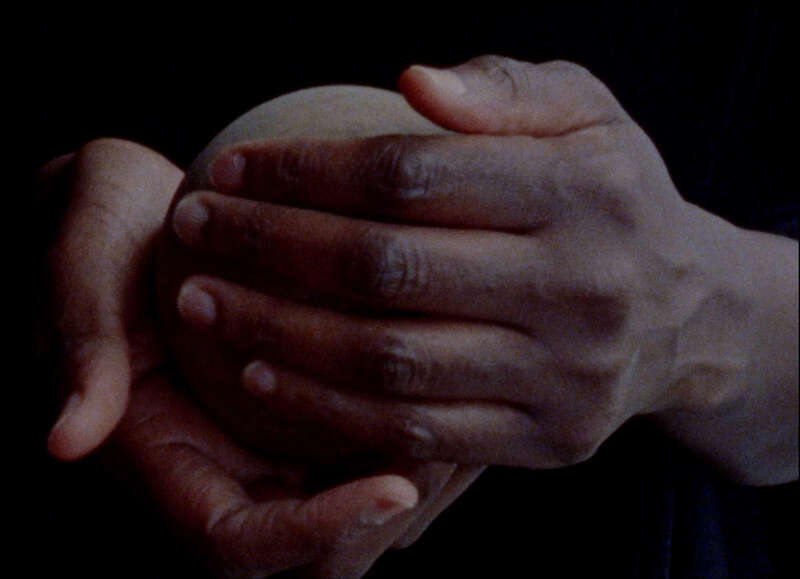
Eternity, 2020 © Natacha Nisic
Waves of Care
Editor's note. In the aftermath of its printed publication on 'Care', Trigger online continues to publish a diversity of independant contributions on the intricacies of care today. This time, Trigger joins the 'waves of care' that have been generated through an online participatory art project called The Crown Letter created during the lockdown by an international collective of women artists. Crown Letter artists have employed photography, collage, writing, sound, drawing, sculpture, and film to create works for weekly publication on The Crown Letter every Tuesday since 21st April 2020. These publications are acccumulating, expanding on what is now an exceptional repository of artistic responses and exchanges during this time of global turmoil.
The following contribution is the result of an online collaboration between this collective and Simona Dvorak and Elena Sorokina, who are themselves part of the Paris based curatorial group, Initiative for Practices and Visions of Radical Care. On the basis of a dialogue with Sorokina, Dvorak reflects on the Crown Letter‘s processes and work through a curatorial lens, informed by their own collective practice. They have selected the following artists from The Crown Letter to become part of this collaborative essay: Anne Brunswic, Liza Dimbleby, Saviya Lopes, Natacha Nisic, Catherine Radosa, Ivana Volaro, Michelle Deignan, SE Barnet, Luise Schröder and Katja Stuke.
Simona Dvorák
23 dec. 2021 • 14 min
The Matriarchs
They followed Matrifocality.
They were fierce.
They were outrageous, audacious, and courageous.
They were committed;
Committed to the survival and wholeness
of entire people/community.
They loved music.
They loved to dance.
They loved their spirits.
They loved food.
They loved their struggle.
They loved themselves
and other women.
They loved Love.
They were the Womanists.
All this while, they carried a part of me inside their womb.
A part that keeps growing inside me now.
We were always connected.
We will always be womanists.
– Saviya Lopes
The Tereza I Know stems from the personal photographic archive of artist Saviya Lopes. This photographic archive – a kind of archive that many have and yet overlook – is an important access point for her to examine the very personal history of her family. Lopes uses it to look at the contemporary, historical, individual, and at the same time collective experience of women in a male-centred household, positioned within a patriarchal Catholic family in the East Indies and the Portuguese colonial empire. The artist placed the work within The Crown Letter, an environment of ‘communal care’, of unity – a kind of community that can exist even without physical presence, like the matriarchs of Lopes’ photographs.
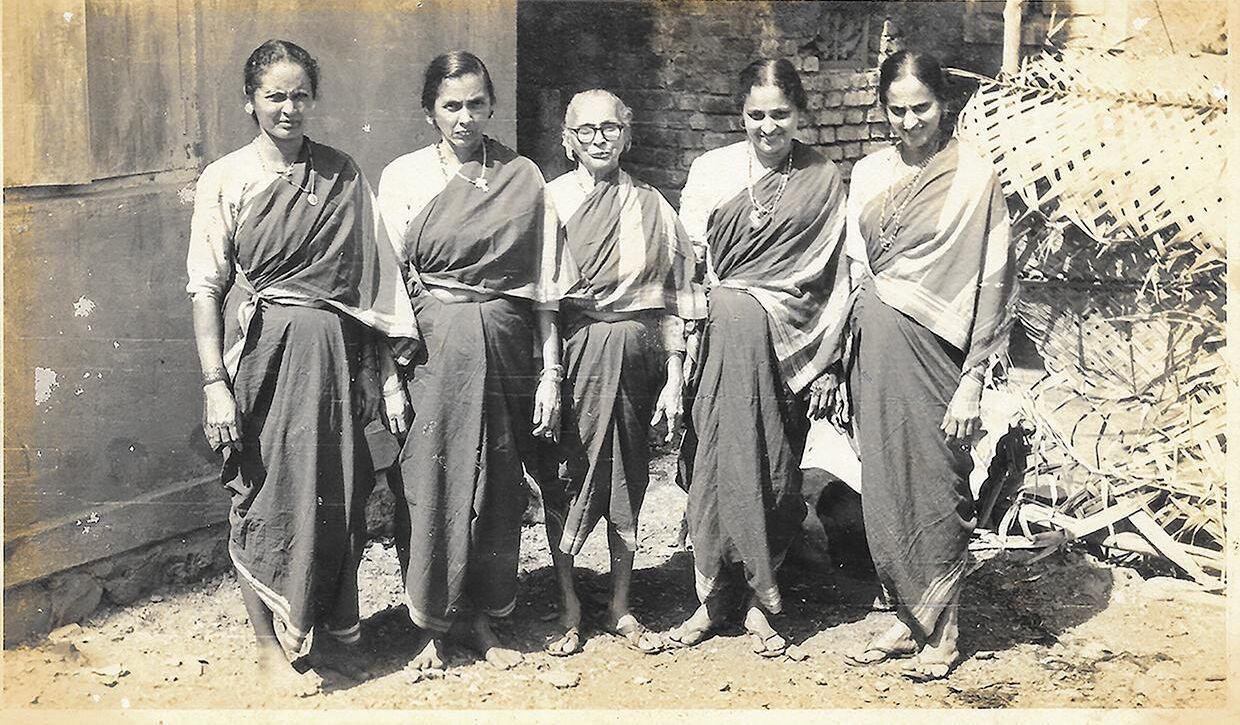
The Matriarchs, The Tereza I know, photographic series with text, 2020 © Saviya Lopes
The purpose of this article is to situate the notion of ‘care’ within The Crown Letter and establish a dialogue between two initiatives that were born during the first lockdown in Paris: The Crown Letter and the Initiative for Practices and Visions of Radical Care. Both were created by women who gathered around the notion of ‘care’, understood as a collective process of learning new paradigms and unlearning dominant ones. Within both these initiatives, care is understood as a process of cultivating responsibility, of paying attention to spaces that lack security. This care emphasizes, as hospitality, sharing, kindness, and listening – among other values – that are needed now more than ever in this current health emergency underpinned by global inequality, racism, sexism, and a rise in fascism. The dire context gave rise to these gatherings of people, all sharing the same sense of urgency to deploy and reinvent ‘care’ for COVID times and beyond.
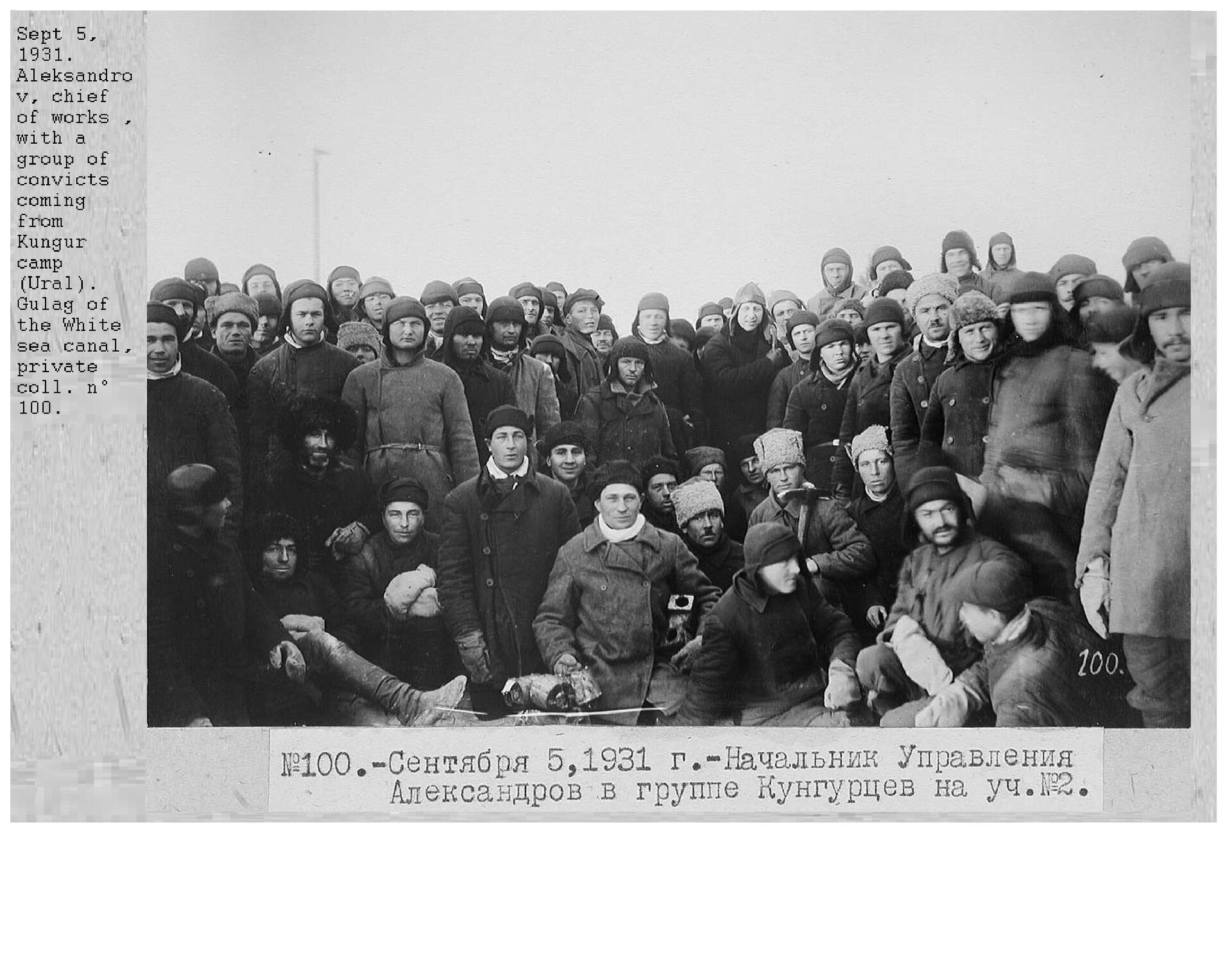
Aleksandrov, chef de travaux avec le groupe des hommes de Koungour
sur la section n°2.
Boris, l’oisillon, photography with text, 2021 © Anne Brunswic
Read the accompanying text ‘My friend Boris’ from The Crown Letter, 8 June - 15 June 2021, here.
The Crown Letter was born out of the need to preserve the production and dissemination of women’s art at a time when their lives, their networks, and the visibility of their work has been severely disrupted. Through virtual salons with group members and weekly online exhibitions of new artwork, published every Tuesday on the group’s website since the early stages of lockdown in 2019, the women have created another form of a community or family, a refuge from the different levels of predicament each was experiencing at that time. Now, with a global network of nearly forty-five artists, The Crown Letter website holds a significant archive of women’s art across boundaries.
The Initiative for Visions and Practices of Radical Care was inspired by thinking about the crisis by Elísio Macamo, Professor of African Studies at the University of Basel in Switzerland. He wrote, ‘COVID-19 is a cruel reminder that crisis is us. As we brace up to look the pandemic in the eye, we would be well advised not to forget what our normal is, namely crisis. History has taught us that you do not master a crisis by setting the return to normality as your goal. You master a crisis by enabling yourself to act whatever the circumstances.’
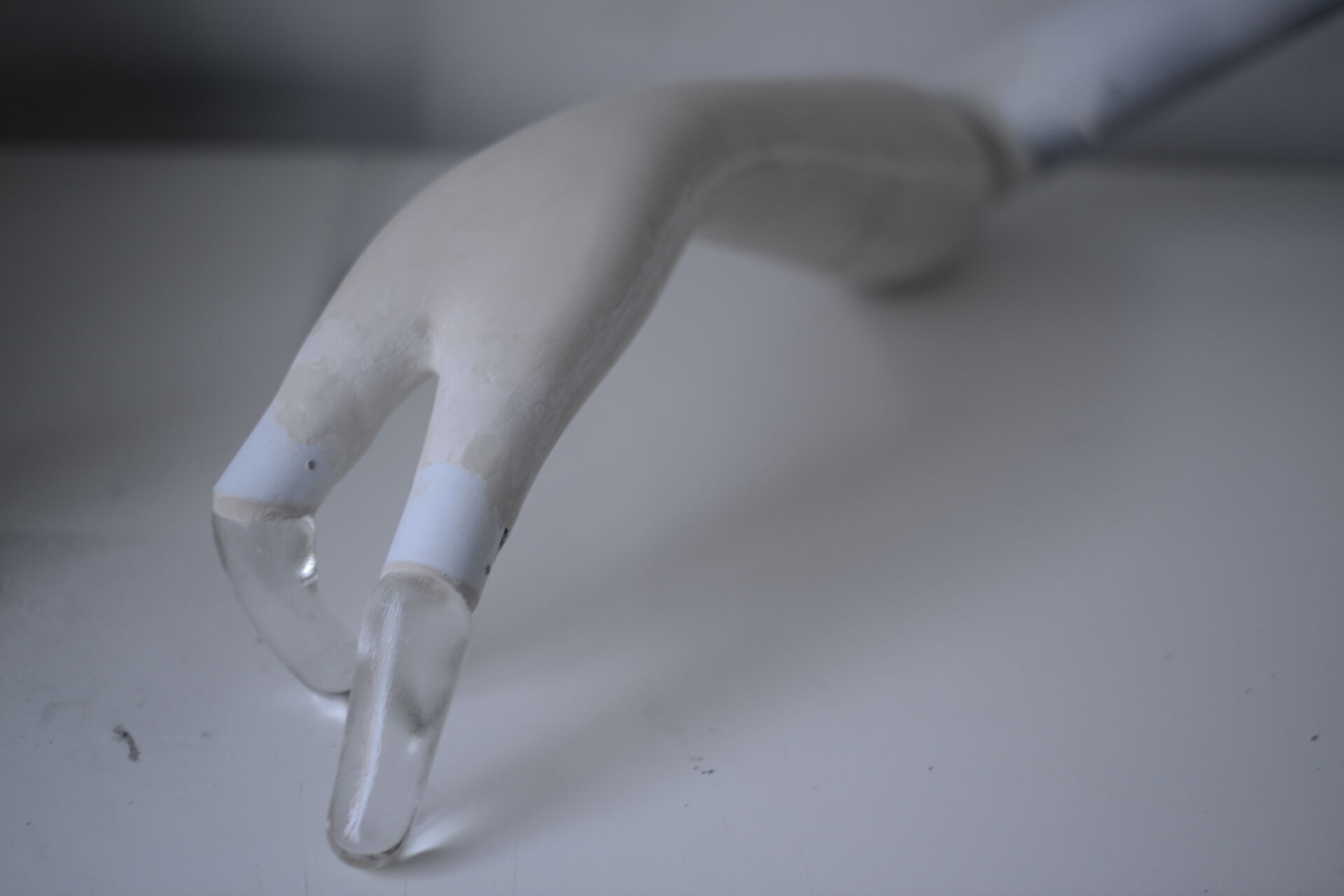
These last weeks have had a sense of waiting, stillness and tension. I want to go forward, want to press play.
Text and photographic detail of Washed Up, glass, jesmonite, plastic pipe, 2021 © Emma Woffenden
Nataša Petrešín Bachelez and Elena Sorokina used their curatorial work as a way to act on existing emergencies, especially with artists whose projects are based in care. They reached out to artists, asking them to respond to the situation and share how they could transform their productivity and creativity into caring and solidarity around the most vulnerable people in their direct or indirect neighbourhoods and communities. As result, they brought together a group of people from different backgrounds: artists, philosophers, curators, musicians who live in Paris and its suburbs, who recently arrived as refugees or asylum seekers. The two curators invited them to rethink the structures and tools used in art for COVID times. Several projects emerged, all of them were based on simple and generous gestures such as drawing the line in public space (No Straight Line), walking together (Care Walks), or sharing our fears, insecurities, and hopes for post-COVID relief around food (Care Pick-Nicks). At a time when life went online, the curators’ modest acts perfectly functioned in the analogue world, following France’s COVID-19 security measures and yet allowing people to meet and exchange.
In the same way, The Crown Letter was a matriarchal call to come together in the midst of urgent events to think about how to reshape the way people exist together. The understanding of care that these two initiatives share is rather an elaboration of the radical imaginary, the hope of rehabilitation in opposition to the individualistic industry of self-care. This dimension of care at the right scale can be small, local, and concrete.
We believe that action is a form of resilience.
We use curation and art production as a form of spiritual and social healing.
Curation is a collective practice related to both resilience and healing.
A sort of radical love merging from radical hospitality.
Peddling real hard, liberated from the obligation to get anywhere! HD Video, 59 sec, 2020, Dettie Flynn
Natacha Nisic, the founder of The Crown Letter, is a visual artist and filmmaker challenging the invisible relation between images, humans, and their surroundings. Since 1993, she has been capturing bodily gestures by filming them using a Super 8 camera. The most recent photographic image she created from this series, Eternity [cover image], representing hands both hiding and holding a wooden ball, dates to the beginning of the pandemic. This work can be read as a reference to health, protection, and security, as almost a parable of a care-less functioning society. But Nisic’s work also references notions and representations of violence. Considered through that lens, the care she proposes in Eternity is in opposition to ubiquitous violence whilst foregrounding the role that epistemic forms of oppression – the forced de-legitimisation of knowing – play as a key element of domination and humiliation.
A specific example of this begins with constituting a subject as ‘Other’, resulting in an absolutely heartless and inhuman act of physical violence – the murder of George Floyd, a 46-year-old African American man who died at the hands of a white policeman on May 25, 2020, in Minneapolis, Minnesota. Incidentally, the reform of the American police force demanded by the Black Lives Matter movement still has not been achieved, and various bills on the subject have been stalled. At the same time, #stayathome exposed the social inequalities in many countries and led to an increase in domestic violence. This endless chain of almost incomprehensible cruelty and aggression was already apparent through the so-called ‘refugee crisis’ fuelled by postcolonial conflicts; the increase of neo-colonial global structures; the persistent application of the idea of justice to legitimise a violent migration policy of aggressive persecution; and the strengthening of neo-fascism, exemplified by the contemptuous power and privatisation efforts of Viktor Orbán in Hungary, among other examples.
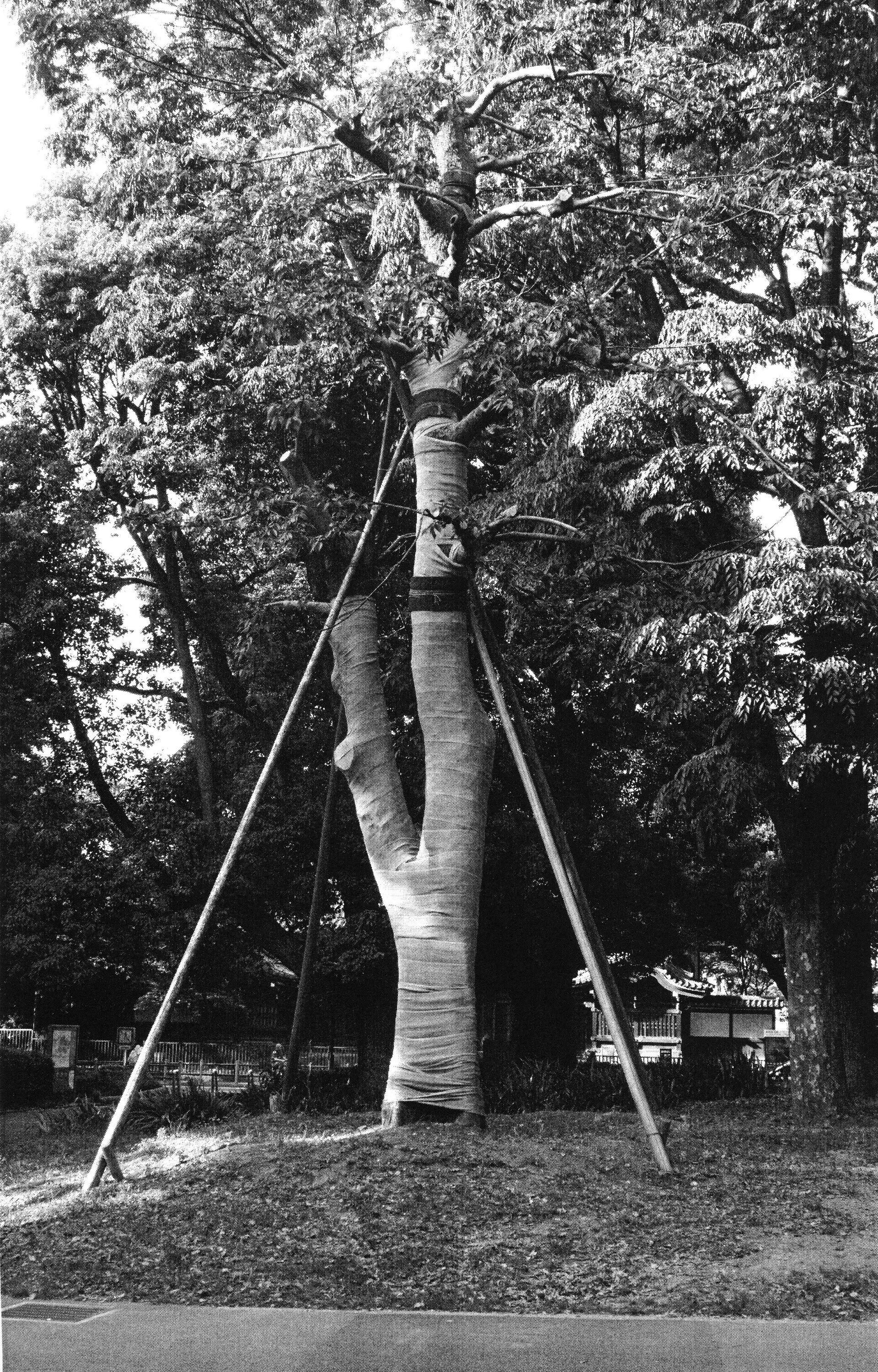
o.T., Tokyo, photograph from the series, Cities change the songs of birds, 2021 © Katja Stuke
In times of sadness, grief, or great trauma, it’s to beauty that we turn. We send flowers. We leave flowers. We share stories. Even in the direst misery of the slum or the refugee camp, we decorate the walls of the shack or tent. In times of plenty as well as want, we sing and we make marks. When we’re quarantined and there’s nowhere to go, nature leaves us the escape hatch of imagination. That’s why art is essential, and not a privilege. That’s why art endures.
– Olu Oguibe
Today, it is already eighteen months since the artists of The Crown Letter first shared their collective ‘diary’. On their website, one can find fragments of the recent past in the form of images, texts, and videos, marked and organised by the dates of their publication. This is both a huge collective repository of memory and the broad dialogue between the artists on the ongoing present and the uncertainty of the future. Throughout, there is a sense of spontaneity, response, and exchange between them and our collective circumstances. In most cases, these women have almost never met in real life, but they have created a deep bond based on sharing routines and political and social challenges across different geographic contexts, as well as by maintaining honesty, sensitivity, fragility, and strength together.
Bread week, single channel, HD video, 1 min 5 secs, 2021, Michelle Deignan
Since her first contributions to The Crown Letter, beginning during the first lockdown in London where she lives – a time of sudden disruption to human contact and flow – Michelle Deignan began using her camera to capture her family’s environment and activities, both inside and outside the home. She films daily details: meal preparation, family conversations, play time, errands, journeys, endless walks in the neighbourhood where on one occasion she filmed discarded pieces of bread on the street. In Bread Week (The Crown Letter, week 39, 2–9 February 2021), she describes the image of bread as one of the most obvious historical symbols of reliance. The film places the discarded pieces of bread within the context of the current culture of aesthetic perfection, exemplified by the perfect loaf.
SE Barnet, who is also based in the U.K., considers the tension between internal and external landscape, specifically the relationship between her own body and the environment. The video Crowned (The Crown Letter, week 19, 1–8 September 2020) is a self-paced virtual narrative about damaged teeth and a broader reflection on the relationship between the circumstances of the world and physical or mental health, such as the lack of physical contact and ‘touch without touching’.
Crowned, single channel, HD video, 3 mins. 11 secs, 2020, SE Barnet
Part of Liza Dimbleby’s contribution to The Crown Letter over the last eighteen months has been the series of writings titled Letter from Glasgow. She always combines her text with imagery, and this has included the photographic series Other People’s Rooms. Through this combination of photography and text and careful readings of the context and surroundings, the artist imagines the lives and activities of the people who inhabit the rooms she can see from her own window. One of these people appears to be a lonely young student. Dimbleby speaks of an invisible dialogue with this person, and over time this progresses into a direct exchange between them. The development in the relationship that this cumulative work charts creates, above all, an archive of empathy and hospitality.

Letter from Glasgow: Through the window, photography with text, 2021 @ Liza Dimbleby
At night I see her light on late and the curtains closed and I worry about the possibility of bad news from home. Sometimes the curtains stay shut all the next day and I worry more. But so far, when I pass her open window on the street and check in, her family have survived intact. Soon, once the restrictions here are eased, my daughter and I will cross the road for dinner.
– Liza Dimbleby
Catherine Radosa, an activist artist based in Paris, mixes poetic and militant moments of resistance and struggle. Her works question democracy in the presence of ‘liberty’ within public space and the public sphere. This includes natural and agrarian spaces and the related contemporary context of their deterioration, as well as our restricted access to nature, particularly for French urban inhabitants during lockdown. Her short video Alivio (Crown Letter, week 36, 12 –19 January 2021) is a celebration of women’s intimacy and sexuality, using a motif of flow with fountains as symbols of liquidity, source, and transparency. The video is also a poetic reaction to events of 2020, referring to the Strajk Kobiet (women’s strike) against a conservative Polish government that wants to ban and penalise abortion and the ‘green scarf’ movement campaigning for abortion rights in Chile and Argentina.The Argentine Senate finally legalized abortion up to fourteen weeks of pregnancy. This decision is the culmination of a long battle marked by the rejection in 2018 of the pro-abortion bill.
Filmed in the Vosges in eastern France, Alivio was made at a time when the French government was tightly regulating the movement of people as part of COVID-19 restrictions. Featuring a fountain whose form is reminiscent of female genitalia, the video opens up multiple political questions about the female body, including the limits of women’s control over their own bodies, access to abortion, and the continued persistence of taboos around female pleasure. Significantly, Alivio was created and published during a time of shared happiness, specifically with the Argentine artists of The Crown Letter, as the right to an abortion in Argentina was finally made law on 14 January 2021. Within the limpid water jet of the Alivio fountain, there is an apparition of the crowds from Argentina’s green scarf movement, surrounded by the mountain flora and radiating joy.
Alivio, HD video, 55 secs, 2021, Catherine Radosa
All of these examples speak about the strength of unity and of sharing that is embedded in the care and practice of the female artists of The Crown Letter. Here we’re presenting only a tiny fraction of the richness of their archive. As the project evolved, their regular online exchanges have become extremely important to them. They have formed a mutual support bond through making, publishing, looking, and listening – a trans-local interaction. Ivana Vollaro, an artist from Buenos Aires, described how The Crown Letter’s virtual salon – online weekly meetings in which the artists talk about art and imaginary worlds – has become one of her most precious refuges during the pandemic. Her work The Crown Letter como refugio beautifully archives this caring relationship through text inscribed with embroidery (The Crown Letter, week 50, 20–27 April 2021). The shared moments of The Crown Letter salons bring this community that cares for each other closer to home. But how do you take this care and nurture it into the future?
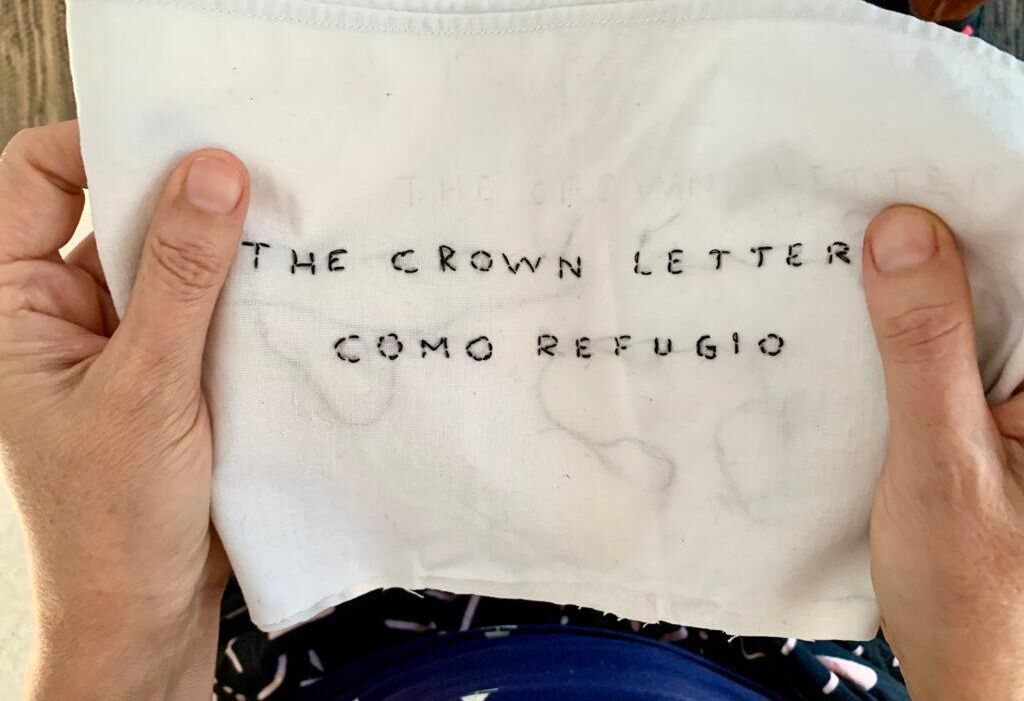
The Crown Letter como refugio, photography, 2021 © Ivana Vollaro
All of us will have to build the corona society, each on our own terrain and each in our own environment. We should start today rather than tomorrow and share all our knowledge, experiences, and victories with each other. One day, there will be a post-corona society, but it will bear the traces of what we are doing now and what we are achieving now.
French philosopher Barbara Stiegler speaks in De la démocratie en pandémie: Santé recherche, éducation about the duty of universities and academics to make scientific discussion possible again within the public sphere. She also talks about the need for the academic world to take a position of resistance in the crucial political debates that will have to be conducted, in the months and years to come, around public health. In the introduction to her text, Stiegler quotes Richard Horton, who states that ‘COVID is not a pandemic’. In fact, for this editor-in-chief of one of the most prestigious international medical journals, COVID-19 appears to be part of a chain of conditions, amplified by the dismantling of health systems. Rather than a pandemic, Horton speaks of a ‘syndemic’, a disease caused by social inequalities and by ecological crises understood in the broadest sense. Syndemics are characterised by biological and social interactions between conditions and states, interactions that increase a person’s susceptibility to harm or worsen their health outcomes. Addressing COVID-19 medically means addressing hypertension, obesity, diabetes, cardiovascular and chronic respiratory diseases, and cancer, as well as conditions such as snake bites, epilepsy, renal disease, and sickle cell disease. The characteristics of a care-less society are essential ingredients for a syndemic, which requires us to approach the health differences of all communities. Before the syndemic, this care-less
system made many social maladies and maladaptations as good as invisible to those who didn’t suffer them. Thus, the term ‘syndemic’ also means considering the different levels of devastating impact of a disease within social classes, for example, within minority ethnic communities.
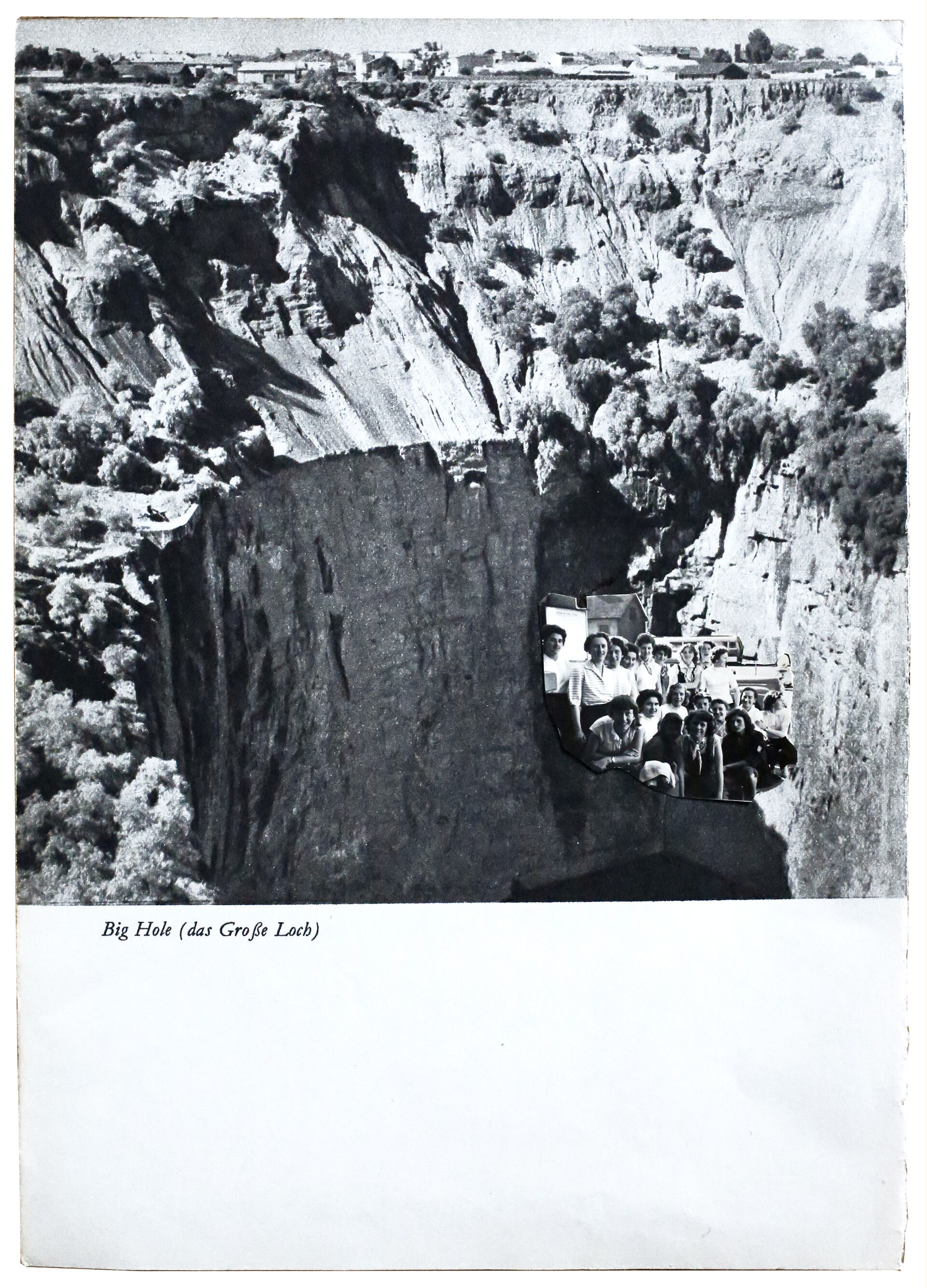
Investing in chance, photo-collage, 2020 © Luise Schröder
Françoise Vergès often speaks of hope as a new emergency. This is not a matter of being too positive or too pessimistic. This hope is a hope of rehabilitation, an imagining of another possible future. The Crown Letter is the archive of the present as a response to our fragile time. The Initiative for Practices and Visions of Radical Care makes specific interventions in the context of the most fragile neighbourhoods and communities in the Île-de-France. Both initiatives transform productivity and creativity into care and solidarity with the aim of having a profound social and personal impact. These are gestures and interventions that are part of a larger reflection on the system of production, distribution, and mutual solidarity in contemporary art.
Partners
-
The Crown Letter is an online participatory art project created during the lockdown. It is a worldwilde open platform for the free expression of women artists, a cartography of the intimate over time and space, offering a meeting place for a community of subjectivities. The Crown Letter is released every Tuesday since 21st April 2020.
The Crown Letter is an international collective of women artists founded by the Paris based artist Natacha Nisic in April 2020, in response to the first wave of the Coronavirus pandemic. Nisic created this project to address a need to protect the production and dissemination of women’s art at a time of significant disruption to their lives, networks and the visibility of their work.